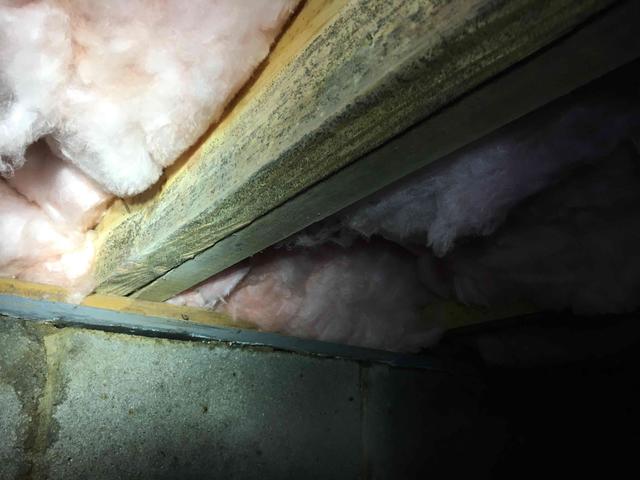
Mold and Mildew
Mold and Mildew have grown on to the floor joists of this crawl space. When the relative humidity within the crawl space reaches above 60%, alongside a temperature of about 70 degrees or higher, mold will begin to grow on any organic materials. Since approximately 50% of the air you breathe in a home comes from your crawl space, homeowners will smell the musty odors coming from mold growth, and mold spores will leak up into the home and irritate anyone with mold allergies, while prolonged exposure to mold can actually cause asthma.
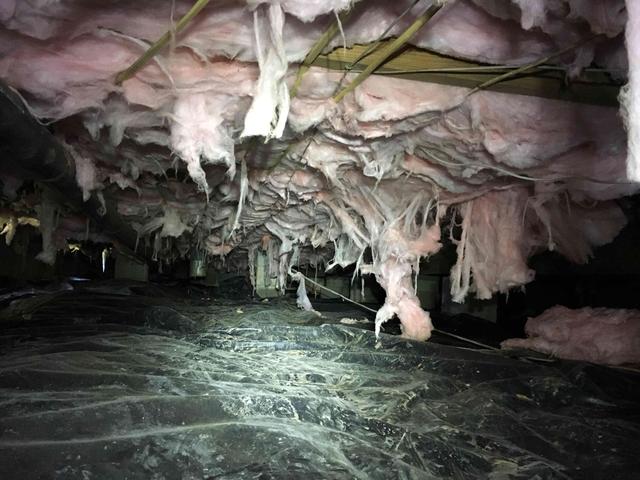
Falling Fiberglass
The fiberglass insulation shown in these floor joists is saturated with water and is beginning to fall apart. When there is moisture in the crawl space, the fiberglass will act as a sponge and collect much of this water. However, it was not created to hold moisture, as the water droplets pull apart the fine glass fibers, causing the insulation to sag and fall to the ground. The fiberglass, being torn apart and separated will lose its R-value and will need to be replaced or removed.
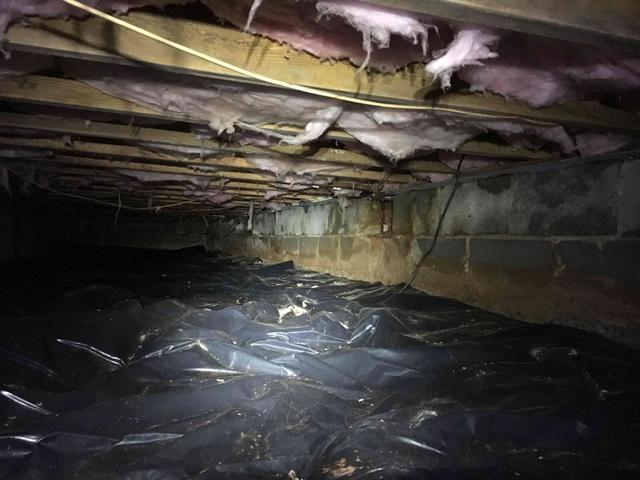
Porous Foundation Walls
The foundation walls of this crawl space show clear signs of moisture infiltration. Efflorescence is visible, meaning the stains on the foundation walls are from when water forced its way through the porous cinderblock walls, dragging the sediments and salts from within the blocks to the surface. If a CleanSpace vapor barrier and proper insulation were installed in this crawl space, they would help to mitigate outside air and moisture from impacting the crawl space.
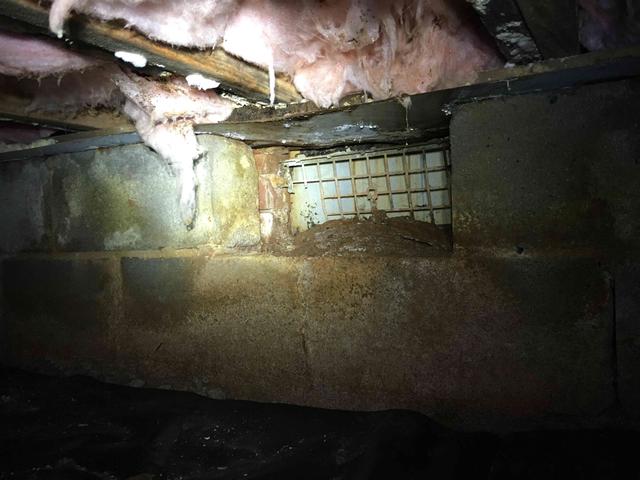
Open Vents
Open vents in foundation walls are commonly found within McKenney crawl spaces. These vents are meant to help air out the crawl space, but they can actually cause many issues for homeowners. Open vents allow outside air and moisture to freely move into the space. The moisture and outside temperature influence can cause the relative humidity to rise, which may lead to mold and mildew growth, as well as structural damage. Critters and creatures also love the dark, damp space and may move in. These vents need to be sealed off, along with the insulating of the foundation walls, to help prevent these issues.
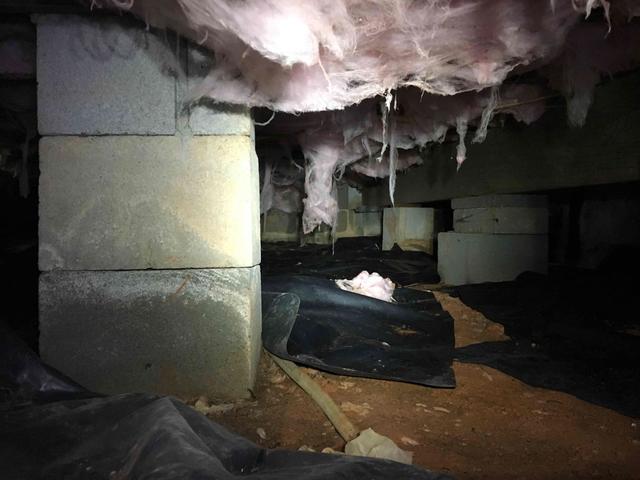
Inadequate Vapor Barrier
This 6-mil liner is the standard vapor barrier installed during the construction of a home in McKenney, Virginia. It is a flimsy, easily torn vapor barrier typically chosen for its cheapness by builders. It does not get sealed around piers or mechanically fastened to the foundation walls, and service people who need to do work within the crawl space often tear it while crawling on top of it. The exposed sections allow the earth's moisture to freely rise and cause problems in the crawl, such as increasing the relative humidity and allowing mold growth to thrive. The vapor barrier will need to be replaced with a more durable liner to help mitigate outside and ground moisture from leaking in.
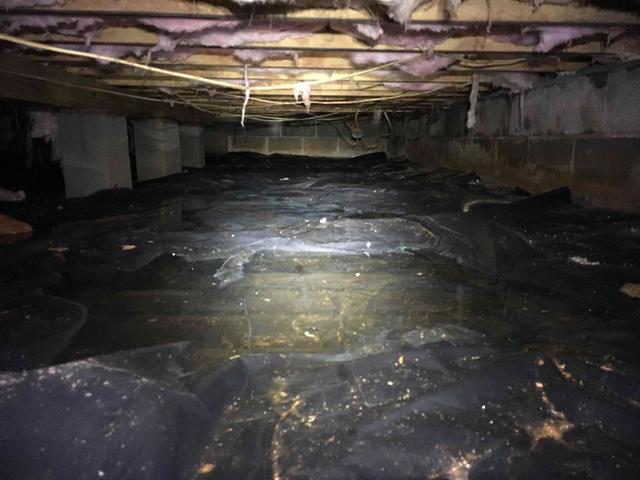
Water Puddles
Water puddles have formed within this crawl space and can be a major problem for the homeowner. Water is a clear sign that there is either infiltration from the outside seeping in, or that the relative humidity has reached 100%, in which case the air cannot hold any more water and condensation forms on cooler surfaces in the crawl space. Water puddles left by floods or leaks will also cause the relative humidity to elevate with warmer temperatures, leading to other issues such as mold and mildew, structural damage, and wood rot.

